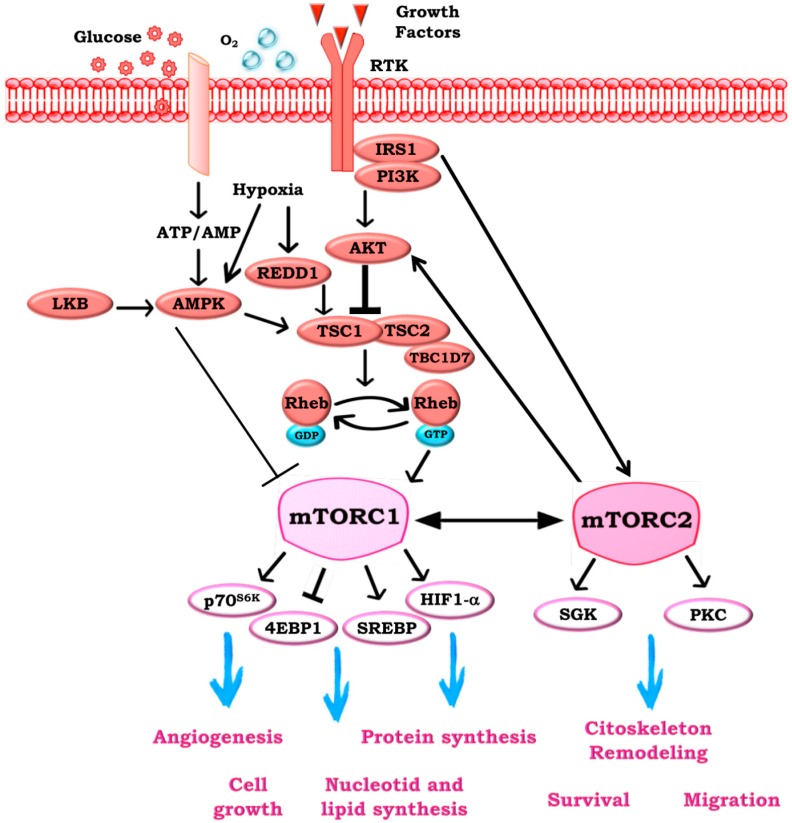Figure 1.
The mammalian target of rapamycin (mTOR) pathway. mTOR signaling is activated by extracellular signals like growth factors, nutrient, and oxygen levels via the phosphoinositide 3-kinase (PI3K)/protein kinase B (AKT) pathways. Extracellular signals may both inhibit the tuberous sclerosis complexes 1–2 (TSC1–2) to promote the accumulation of RAS homolog enriched in brain (Rheb)-GTP and the subsequent activation of mTOR complex 1 (mTORC1), and activate TSC1–2 complex to block mTORC1 by Rheb. Activation of 5′-AMP activated protein kinase β (AMPK-β) by low levels of energy results in direct phosphorylation and activation of the TSC1–2 complex. mTOR complex 1 (mTORC1) activation leads to the phosphorylation and activation of mTORC1 effector proteins ribosomal protein S6 kinase (p70S6K1) and 4E-Binding Protein 1 (4EBP-1), thus resulting in initiation of specific cap-dependent translation events. Then, mTORC1 regulates cell growth and protein translation through p70S6K1 and 4EBP-1, as well as lipid synthesis through SREBP1, while angiogenesis through hypoxia-inducible factor (HIF)-1. The function and activation of mTORC2 is less well understood. It is thought to be activated by growth factors through the PI3K pathway and mTORC1. mTORC2 influences the cytoskeletal organization survival and migration.

